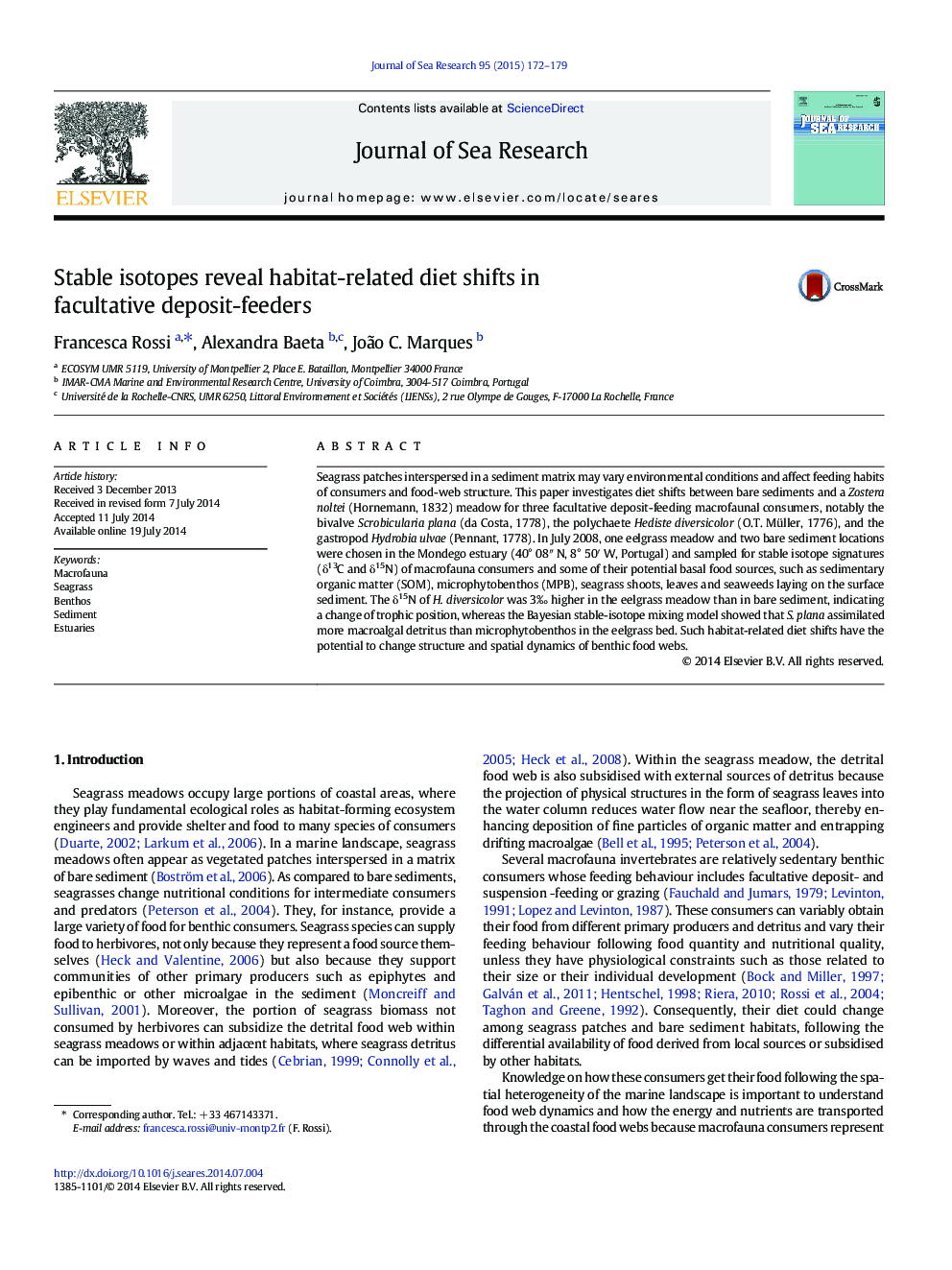| Article ID | Journal | Published Year | Pages | File Type |
|---|---|---|---|---|
| 4549758 | Journal of Sea Research | 2015 | 8 Pages |
•We investigated macrofauna diet across an eelgrass bed and bare-sediment habitats.•In the eelgrass bed trophic position increased.•More detrital macrophytes composed animals' diet in the vegetated habitat.•Diet shift may increase spatial dynamics of the food web.•Adequate management measures should be undertaken to protect this variability.
Seagrass patches interspersed in a sediment matrix may vary environmental conditions and affect feeding habits of consumers and food-web structure. This paper investigates diet shifts between bare sediments and a Zostera noltei (Hornemann, 1832) meadow for three facultative deposit-feeding macrofaunal consumers, notably the bivalve Scrobicularia plana (da Costa, 1778), the polychaete Hediste diversicolor (O.T. Müller, 1776), and the gastropod Hydrobia ulvae (Pennant, 1778). In July 2008, one eelgrass meadow and two bare sediment locations were chosen in the Mondego estuary (40° 08″ N, 8° 50′ W, Portugal) and sampled for stable isotope signatures (δ13C and δ15N) of macrofauna consumers and some of their potential basal food sources, such as sedimentary organic matter (SOM), microphytobenthos (MPB), seagrass shoots, leaves and seaweeds laying on the surface sediment. The δ15N of H. diversicolor was 3‰ higher in the eelgrass meadow than in bare sediment, indicating a change of trophic position, whereas the Bayesian stable-isotope mixing model showed that S. plana assimilated more macroalgal detritus than microphytobenthos in the eelgrass bed. Such habitat-related diet shifts have the potential to change structure and spatial dynamics of benthic food webs.
